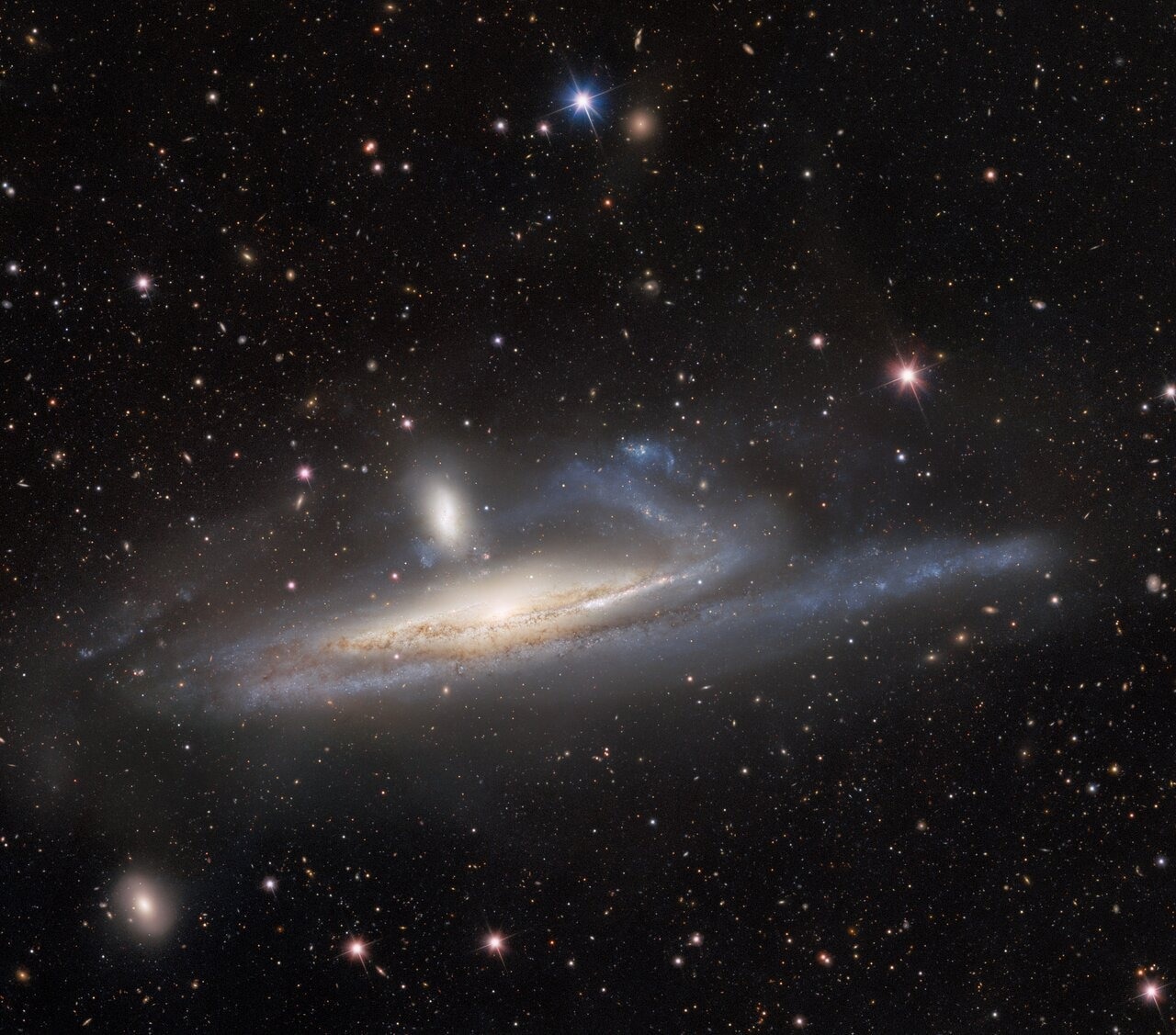The spiral galaxy NGC 1532, also called Haley’s Coronet, is captured in a lopsided tug of war with its smaller neighbor, the dwarf galaxy NGC 1531.

Dark Energy Camera Captures Galaxies in Lopsided Tug of War, a Prelude to Merger. Image Credit: National Science Foundation
The image that was taken by the US Department of Energy’s (DOE) Dark Energy Camera ascended on the National Science Foundation’s (NSF) Víctor M. Blanco 4-m Telescope at Cerro Tololo Inter-American Observatory in Chile, a Program of NSF’s NOIRLab—catches the mutual gravitational impacts of a massive- and dwarf-galaxy merger.
Galaxies grow and develop over billions of years by absorbing nearby companions and blending with other galaxies.
The galactic growth process’ early stages have been exhibited in a new image that has been taken with the US Department of Energy’s (DOE) Dark Energy Camera (DECam) fixed on the National Science Foundation’s (NSF) Víctor M. Blanco 4-m Telescope at Cerro Tololo Inter-American Observatory (CTIO), a Program of NSF’s NOIRLab.
The huge barred spiral galaxy NGC 1532, also called Haley’s Coronet, is situated around 55 million light-years away in the direction of the southern constellation Eridanus (the river).
The availability of sweeping spiral arms has been seen edge-on from Earth, with the nearer arm dipping in the downward direction and the shrinking arm lurching upward as it tugs upon its smaller and dwarf companion galaxy NGC 1531.
Such gravitationally bound galaxies will ultimately become single, as NGC 1532 entirely consumes its smaller companion.
But despite its small stature, the dwarf galaxy has also been exerting a remarkable gravitational impact on its larger companion, thereby deforming one of its spiral arms, which could be seen increasing above the galactic plane.
Besides, plumes of dust and gas could be noticed between the two galaxies, like a bridge of stellar matter held in place by the rival tidal forces. Also, this interaction has activated bursts of star formation inside both galaxies.
This lopsided cosmic tug of war is considered a snapshot of how big galaxies grow and evolve by devouring smaller galaxies, thereby absorbing their stars and also star-forming material. A similar process has occurred in the Milky Way, probably six times in the past, leaving immense streams of stars and other signs in the halo of the Milky Way.
The process of absorbing a smaller companion galaxy is considered to be extremely different from the cataclysmic merger of two spiral galaxies of comparable size. As far as the latter case is concerned, two huge galaxies collide to develop a completely clear galaxy with its shape and characteristics.
This kind of galactic merger will take place in the Milky Way when it merges with the Andromeda Galaxy four billion years from now.
DECam, with its peerless wide-field imaging abilities, provides astronomers with highly elaborate views of such large-scale galactic interactions.
Also, it has exceptional sensitivity, using the 4-m Blanco telescope, required to detect faint objects in the Solar System and also to trace the impact of dark matter on galaxies throughout the visible Universe. At present, DECam is utilized for programs covering an extensive range of science.